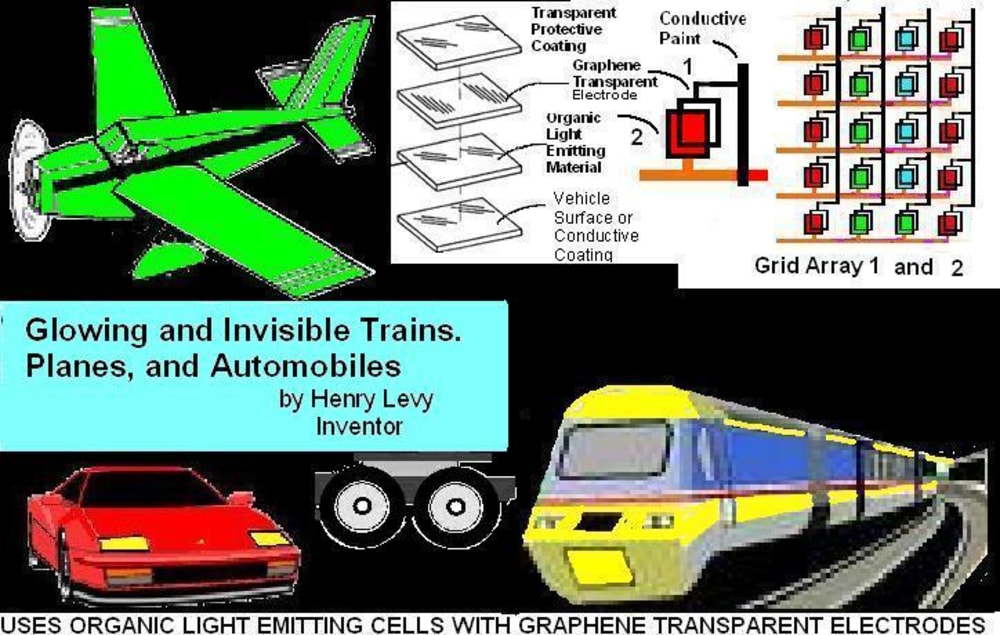Glowing airplanes, jets, trains, cars, trucks, boats, motorcycles, and bicycles, can now be practically and inexpensively manufactured by using robots to paint/print a multilayered sandwich of materials creating organic light-emitting electrochemical cells (LECs) which will emit light when electrically excited. This is now possible by using a painted-on/printed-on affordable transparent conductive electrode layer made of the carbon material graphene along with a layer of organic light emitting materials on the conductive surface of a vehicle. Pixel cells can be individually addressable by programmable controllers signalling the electrodes via conductive paint wire trace patterns over insulative layer patterns. The organic colored light emitting materials, graphene oxide conductive transparent electrodes, conductive wire trace patterns, and insulative layer patterns can be applied as solutions by articulated robots in layers by simple painting or programmable printing processes. Cartesian (XYZ ), cylindrical, spherical/polar, SCARA, or parallel robots can also be used instead of articulated robots with programmable printing, painting, or deposition heads (end effectors). In operation, electrical power is applied between the metal car surface or other vehicle (or conductive surface layer) through an organic light emitting material layer to the graphene oxide transparent electrode/s exciting the organic light emitting material to emit light. Individual pixels or the whole layer can emit light. Multicolors can be created by programmably printing each pixel in a proper relative matrix array registration position with a different organic light emitting material for each color. LEC arrays can be covered with transparent protective coatings.
Whereas some vehicles have been built covered with LEDs, electroluminescent panels. plasma panels, (ionized gas cell matrixes), incandescent light bulbs, and even fluorescent light bulbs, all were either bulky, heavy, labor intensive, too expensive, or otherwise impractical. Glowing surfaces like wall paper have been suggested to have been made of organic light emitting diodes (OLEDs), however, the optically transparent conductive electrode used in OLEDs is made of indium tin oxide which is expensive, rare, fragile, difficult to recycle and requires a costly film layer surface deposition process in a vacuum by electron beam evaporation, physical vapor deposition, or a range of sputter deposition techniques. OLEDs are, therefore, impractical also.
However, the inexhaustable carbon material Graphene used in LECs as the transparent electrode is cheap, easily used, flexable, easily recyclable, and makes the concept practical and implimentable.
Bright solid colors, colored patterns, designs, moving images, text, and signs can appear on the surfaces of vehicles. Highy visibile vehicles such as an orange illuminated motorcycle or glowing green car during night or day will significantly increase safety. The military can use this application for invisability and camouflage by photgraphing, and then displaying background field of view imagery upon the surface of military vehicles such as tanks, personnel-carriers, planes, ships etc. A jet can be made to look like the sky, a tank like the desert, or a ship like the water. Vehicle operator’s clothing can be printed with LECs for camouflage. Magnetically or adhesively backed LEC film stick-on panels are alternative configurations for vehicles.
Like this entry?
-
About the Entrant
- Name:Henry Levy
- Type of entry:individual
- Hardware used for this entry:Dell Pentium 4 , 2.4GHz,2Gig RAMSoftware used for this entry:Microsoft Paint
- Patent status:none

